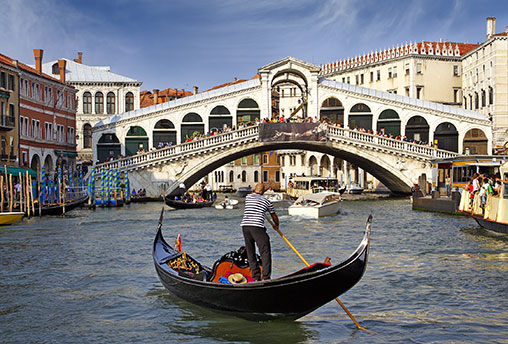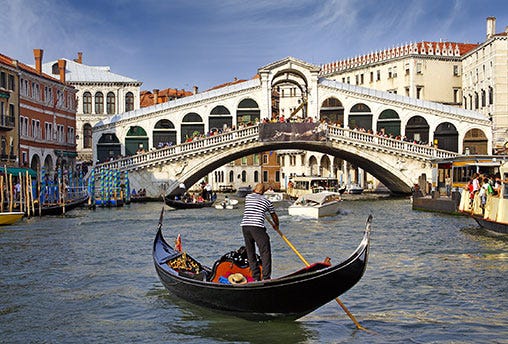March 11, 2015

Every four years or so, text messages, church bells and sirens alert 
ABB - Venice.jpg
the Venetians to what they call an "Acqua Alta" or the imminent arrival of an exceptionally high tide. These are high waters of more than 140 cm, which cover around 54 percent of the city. More frequent, but no less worrying, are high tides of around 110 cm, which occur up to four times a year, placing the fragile city's narrow streets and historic buildings under further, more regular threat of subsidence, and salt and wave erosion.
Built on a group of 118 small islands, the city's life blood, the Venetian Lagoon, a large enclosed bay connected by three inlets to the Adriatic Sea, has now become its nemesis, threatening to completely submerge the city within the next fifty years. To maintain its reputation as the ‘the floating city' and to protect the homes and businesses of its 300,000 inhabitants, the Ministry of Infrastructure and Transport initiated the building of a barrier to protect the city.
With a price tag of $6.7 billion, the MOSE (MOdulo Sperimentale Elettromeccanicoor or Experimental Electromechanical Module) flood defense project is the biggest public works project ever undertaken in Italy. When completed in June 2015, MOSE will comprise a series of barriers, navigation locks and breakwaters that will protect Venice and the lagoon from high water and incoming surges. Primary protection is provided by a series of floodgates on the seabed, which will rise to form a barrier across the three inlets to the lagoon whenever the sea level is 110 cm above normal.
This will isolate the lagoon from incoming high water and provide protection against water levels of up to 3 meters above normal. The end customer for the MOSE Project is the Venice Water Authority. ABB has been awarded this project by Palomar srl, a company providing infrastructures for industrial plants, with its main focus on power and petrochemical industry.
ABB's role in this project is to supply an integrated electrical and automation solution to power and control the navigation lock at the Malamocco inlet, which is where the longest of the four inlet flood barriers is being constructed (two smaller barriers are being built at the Lido inlet and one at the Chioggia inlet).
The navigation lock will enable large ships to enter or leave the lagoon, even if the inlet flood barriers are closed. The lock measures 370 m in length and 48 m in width and operates on the same principle as a canal lock. When a ship enters from the Adriatic, the water level in the lock is the same as the sea, whereas the level in the lagoon is lower. The sea door is then closed and the water level in the lock is lowered to the same level as the lagoon. This arrangement allows smaller boats and vessels to pass through while the barriers are in operation.
Together with complementary measures such as coastal reinforcement, raising quaysides and paving, and improving the lagoon environment, the barriers and the lock will protect the city from extreme events such as floods as well as morphological degradation.
Work began in 2003 at the three lagoon inlets of Lido, Malamocco and Chioggia through which the tide ebbs and flows.
As part of a turnkey design, engineering, supply, installation and commissioning solution, ABB will provide its state-of-the-art Symphony Plus distributed control system (DCS) with the latest HPC800 high-performance controllers to control the hydraulic auxiliary mechanism, which opens and closes the lock gates. ABB will also supply the medium- and low-voltage switchgear, distribution transformers and an uninterruptible power supply system for the lock's electrical system. ABB's part of the project is expected to be completed by 2014.
ABB Inc., 800-435-7365, www.abb.us
About the Author(s)
You May Also Like


